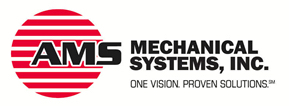General
-
Document No.
-
Project Name
-
Conducted on
-
Prepared by
Program Evaluation
-
INSPECTION DATE
-
PROJECT NAME
-
Add location
-
PROJECT MANAGER
-
FRONTLINE SUPERVISOR
-
SAFETY MANAGER
SUPPLEMENTAL WORK EXPOSURES
-
Select the SUPPLEMENTAL WORK EXPOSURES covered under this evaluation
- Respiratory Protection
- Confined Space
- Hazardous Substances
- Training / Retraining of Miners
- Job Hazard Analysis
- Lock-Out Procedures
- Excavation/ Trenching
- Blood Borne Pathogens
- Fall Protection
- Heat Illness Prevention
- Hearing Conservation
- Arc Flash Prevention
- Other
-
If 'OTHER' was selected please list the exposure here:
PROJECT MANAGEMENT EXPOSURES
-
Are WEEKLY WORK AREA INSPECTIONS being documented?
-
Work Area Inspections are being documented by?
-
Region/Area Managers (Responsibilities 2.4)?
-
Project/Plant Managers (Responsibilities 3.5)?
-
Equipment Managers (Responsibilities 3.5)?
-
Superintendents (Responsibilities 4.6)?
-
Are DAILY work area inspections documented by Frontline Supervisors/Foreman (Responsibilities 7.6)?
-
Are new employees wearing a RED HARD HAT or equivalent (Procedures 4.2.2)?
-
TOTAL number of Red Hard Hats (New Employees) on-site?
-
Is the project/site documenting:
-
Job Hazard Analysis (Procedures 4.1.3)?
-
Site-specific training of employees (Procedures 4.2.2)?
-
Training of employees when NEW hazards are introduced (Procedures 4.2.4)?
-
Does the project/site have random drug & alcohol testing for all employees (Program Supplement 11: 5.1)?
EMERGENCY RESPONSE PREPAREDNESS
-
Are FIRST AID materials readily available on the site?
-
Are emergency response contacts (doctors, hospitals, fire department and ambulance services) POSTED?
-
Are the telephone numbers of local Fire Fighting Agencies posted at each work location?
-
Are Fire Extinguishers inspected MONTHLY (Procedures 4.23.9)?
-
Has the Project/Area Manager been trained in Crisis Communication?
EMPLOYEE EXPOSURES
-
Is DRINKING WATER provided for all personnel (Procedures 4.4.1 & Program Supplement 12)?
-
Select the available type(s) of drinking water provided?
- Bottled Water
- Water Cooler
- Disposable Cups
- Personal Water Bottle
-
Are adequate TOILET FACILITIES provided (or transportation readily available) for personnel (Procedures 4.4.4)?
-
Are HAND WASHING facilities (with soap and water) availble for personnel (Procedures 4.4.6 & 4.4.7)?
-
Are the following PERSONAL PROTECTIVE EQUIPMENT requirements followed:
-
HEAD protection worn by all personnel at all jobsites and outdoor workplaces (Procedures 4.7.4)?
-
HEARING protection worn when noise levels exceed 85 decibles (Procedures 4.7.12 & Program Supplement 13)?
-
EYE protection worn by personnel exposed to dust, flying particles, splashes, chemical and/or radiation agents (Procedures 4.7.5)?
-
HAND protection worn when handling hazardous materials, hot objects, tools/equipment that cause hand injuries (Procedures 4.7.9)?
-
HIGH VISIBILITY shirts or vests worn by personnel exposed to mobile equipment or motor vehicle traffic (Procedures 4.7.7)?
-
FOOT protection worn by personnel exposed to impact or crushing foot injuries (Procedures 4.7.8)?
-
LEG protection worn by personnel operating chainsaws and cutoff saws (Procedures 4.8.15)?
-
RESPIRATORY protection worn for exposure to respiratory hazards, such as dusts, fumes, mists, vapors or gases (Procedures 4.7.10 & Program Supplement 1)?
-
Are logs for ENCLOSED/CONFINED SPACE entries completed daily showing that space was tested prior to personnel entering (Procedures 4.29 & Program Supplement 2)?
-
Are the locations of each "PERMIT Required Confined Space" clearly posted (Program Supplement 2, section 3)
POWER & HAND TOOLS
-
Are all POWER TOOLS, including cords, inspected before use with guards & safety devices in place and functioning (Procedures 4.8.2 & 4.8.3)?
-
Is a DUST reduction system in place on tools used to cut, grind, drill or core (Procedures 4.8.17)?
-
Are gasoline and other Flammable Liquids stored in APPROVED portable tanks or safety cans (Procedures 4.23.13)?
-
Are TEMPORARY POWER SOURCES protected by either a GFCI or an assured equipment grounding program (Procedures 4.8.6)?
-
Are the CONNECTIONS of compressed air hoses (1/2" diameter or greater) provided with clips or chains to prevent whipping (Procedures 4.8.13 &4.8.14)?
EXCAVATION & TRENCHING
-
Is there a current OSHA Excavation & Trenching Permit (if required, see Program Supplement 8)?
-
Who is the individual designated as the COMPETENT PERSON (Procedures 4.16.3)?
-
Are Soil Evaluations documented prior to beginning work by the competent person (Procedures 4.16.1)?
-
Are Excavations 4' or more in depth provided with a safe means of ingress and egress (Procedures 4.16.8 & 4.16.9)?
-
Are Excavations 5' or more in depth provided with shoring, sloping or benching as a means of protecting workers (Procedures 4.16.5)?
-
Do Excavations 20' or more in depth have a detailed plan prepared by a Professional Engineer (Procedures 4.16.7)?
-
Is there a system in place that allows employees to Cross Excavations (Procedures 4.16.10)?
-
Are employees only lifting from Manufacture Approved Pick Points on backhoes/excavators (Procedures 4.16.12 & 4.14.5)?
WORK AREAS & STORAGE
-
Are LADDERS inspected priot to their use (Procedures 4.20.4)?
-
Are all damaged ladders removed from service immediately (Procedures 4.20.5)?
-
Are the PORTABLE ladders in use:
-
Extending at least 36 inches above the top landing (Procedures 4.20.7)?
-
Placed on a substantial footing and securely fastened (Procedures 4.20.6)?
-
Are all FIXED Ladders extending at least 42 inches above the top landing (Procedures 4.20.10)?
-
Are REBAR covers, rebar troughs or fall protection system used:
-
To protect personnel working at grade or at the same surface from exposed projections (Procedures 4.21.1.1)?
-
To protect personnel working above grade and exposed to vertically protruding projections (Procedures 4.21.1.2)?
-
Are REBAR CAPS being used as vertical impalement protection (Procedures 4.21.1.3.1)?
-
Are TRAFFIC CONTROL devices compliant with the Manual on Uniform Traffic Control Devices (Procedures 4.24.8.1)?
-
Are work & storage areas maintained in a clean and orderly condition (Procedures 4.27.1, 4.27.4)?
-
Select the appropriate level of effort observed:
HEAVY EQUIPMENT & HIGHWAY VEHICLES
-
Are BACK-UP ALARMS functional on all equipment with restricted view to the rear (Procedures 4.11.12)?
-
Are Equipment Operators performing and documenting their PRE-SHIFT Inspection, before they place equipment into service (Procedures 4.11.6)?
-
Are conditions that effect the SAFE OPERATION of the equipment corrected before placing equipment into service (Procedures 4.11.7)?
-
Are personnel wearing SEAT BELTS, when provided and when the equipment has ROPS (Procedures 4.11.14)?
-
Are FORKLIFTS only operated by authorized, trained and properly certified personnel (Procedures 4.12.1)?
-
Are the wheels/tracks of all mobile equipment parked on a grade, properly CHOCKED or turned into a bank (Procedures 4.11.15 & 4.11.16)?
-
Are AERIAL LIFT personnel wearing a body harness and lanyard attached as indicated by equipment manufacturer (Procedures 4.19.7)?
-
Are aerial lift personnel standing on the floor of the basket without sitting or climbing on the edge (Procedures 4.19.8)?
PUBLIC PROTECTION
-
Are there sufficient number of WARNING SIGN & DEVICES to provide adequate warning to the general public (Procedures 4.25.1)?
-
Is the SPILLAGE of earth, rock, asphalt, mud or other materials removed and kept clear throughout the day (Procedures 4.25.9)?
EVALUATION COMPLETION
-
COMMENTS:
-
EVALUATION COMPLETED BY:















